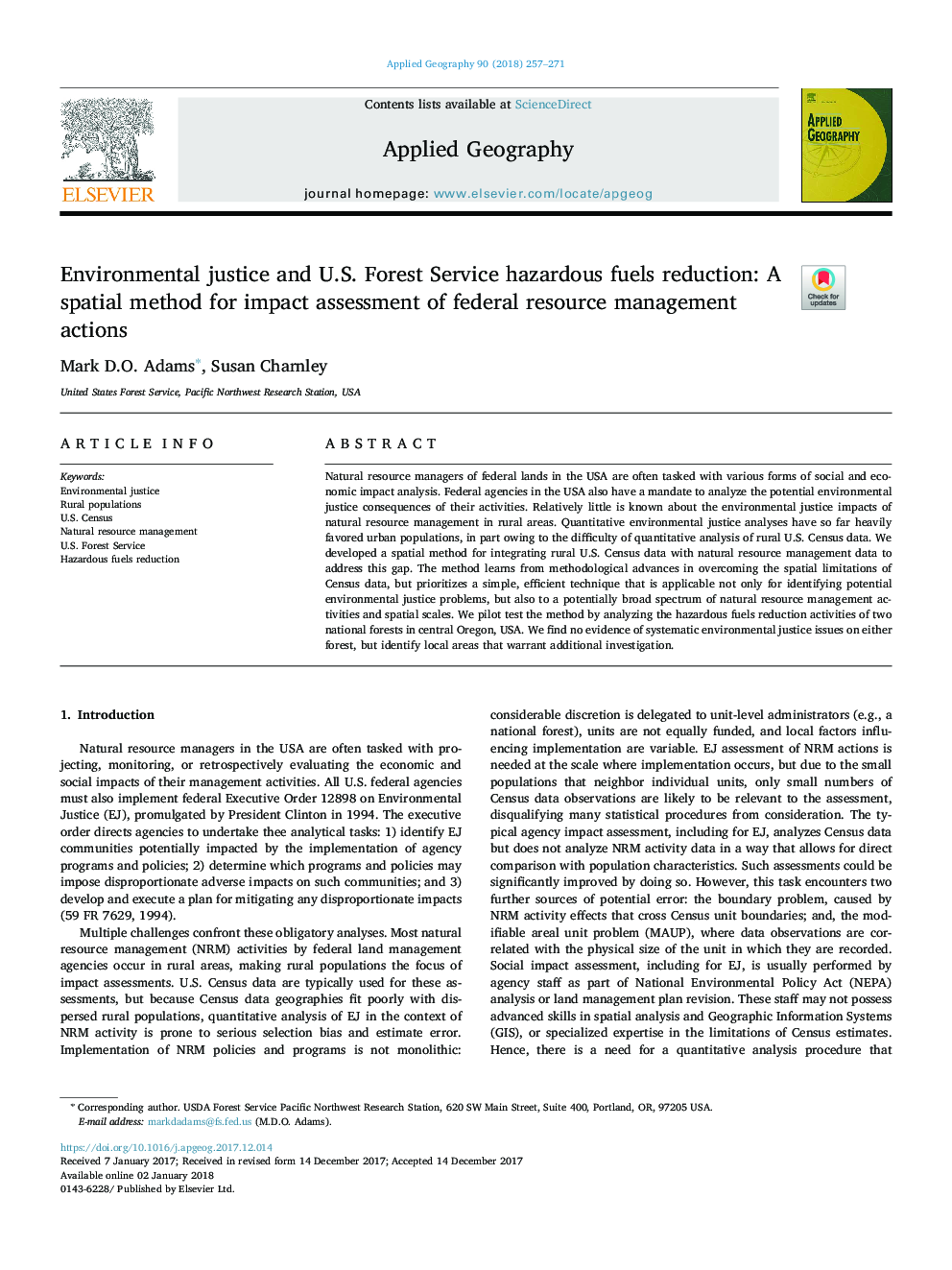| Article ID | Journal | Published Year | Pages | File Type |
|---|---|---|---|---|
| 6538380 | Applied Geography | 2018 | 15 Pages |
Abstract
Natural resource managers of federal lands in the USA are often tasked with various forms of social and economic impact analysis. Federal agencies in the USA also have a mandate to analyze the potential environmental justice consequences of their activities. Relatively little is known about the environmental justice impacts of natural resource management in rural areas. Quantitative environmental justice analyses have so far heavily favored urban populations, in part owing to the difficulty of quantitative analysis of rural U.S. Census data. We developed a spatial method for integrating rural U.S. Census data with natural resource management data to address this gap. The method learns from methodological advances in overcoming the spatial limitations of Census data, but prioritizes a simple, efficient technique that is applicable not only for identifying potential environmental justice problems, but also to a potentially broad spectrum of natural resource management activities and spatial scales. We pilot test the method by analyzing the hazardous fuels reduction activities of two national forests in central Oregon, USA. We find no evidence of systematic environmental justice issues on either forest, but identify local areas that warrant additional investigation.
Related Topics
Life Sciences
Agricultural and Biological Sciences
Forestry
Authors
Mark D.O. Adams, Susan Charnley,
